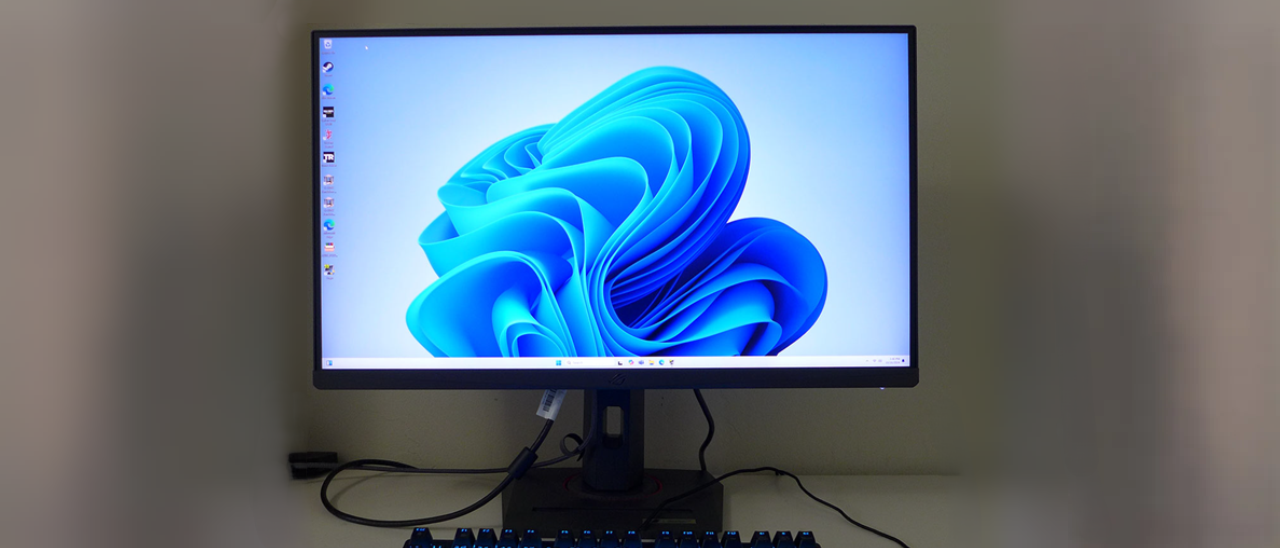Why you can trust Tom's Hardware
I see a lot of fast gaming monitors in my travels but most of them are QHD and FHD resolution. While it is possible to have an addictive experience without super high pixel density, there is something about 4K that makes you want it. The picture has a textural quality that is less often seen outside the category.
That said, gaming is all about frame rates and control response and to excel at these things in 4K, you need a powerful graphics card, and you’ll often be running below 200fps. The Asus ROG Strix XG27UCS represents something rare in this genre in that it is super smooth on a wide variety of systems.

4K at 160 Hz isn’t common but it isn’t rare either. What sets the XG27UCS apart is its premium video processing. The ability to run ELMB backlight strobing and Adaptive-Sync together is definitely unusual. Asus is one of the only companies to offer this capability. And the traditional ELMB is one of the very best with high brightness and no artifacts. It’s rarely this easy to see an 4K monitor without motion blur unless it’s an OLED.
The picture is incredibly sharp thanks to a pixel density of 163ppi. That’s the advantage of a 27-inch screen in this class. Most UHD displays are 32 inches or larger. Low contrast is the XG27UCS’s only real flaw. And there is no dimming to help things along in HDR. But color is pro-level accurate out of the box and DCI-P3 gamut coverage is a whisker shy of 100%.
I’ll close with another mention of the Asus ROG Strix XG27UCS’s tremendous value. It’s $460 at this writing which puts it around $200 below Mini LED monitors that have less effective video processing. For gamers who want the sharpest possible picture, it’s a no brainer. Definitely check it out.
MORE: Best Gaming Monitors
MORE: How We Test PC Monitors
Get Tom's Hardware's best news and in-depth reviews, straight to your inbox.
MORE: How to Buy a PC Monitor

Christian Eberle is a Contributing Editor for Tom's Hardware US. He's a veteran reviewer of A/V equipment, specializing in monitors. Christian began his obsession with tech when he built his first PC in 1991, a 286 running DOS 3.0 at a blazing 12MHz. In 2006, he undertook training from the Imaging Science Foundation in video calibration and testing and thus started a passion for precise imaging that persists to this day. He is also a professional musician with a degree from the New England Conservatory as a classical bassoonist which he used to good effect as a performer with the West Point Army Band from 1987 to 2013. He enjoys watching movies and listening to high-end audio in his custom-built home theater and can be seen riding trails near his home on a race-ready ICE VTX recumbent trike. Christian enjoys the endless summer in Florida where he lives with his wife and Chihuahua and plays with orchestras around the state.

